Listen to our founder Rev. Dr. E. on the blogtalk podcast Candelo’s Corner on KDCL Media! Listen live or listen to the recorded episode at the following link! Rev. Dr. E. will be discussing SAFE (Santeros Against Fraud and Education) and the Santeria Church of the Orishas!
Monthly Archive: July 2012
What is the difference between Voodoo, Hoodoo and Santeria?
All too often, Santeria is mistakenly confused with other African-derived magical or religious systems. It is very common for people to refer to the practices of Santería Lucumi (Lukumi) as “voodoo” by the media, in television and cinema. Movies and television are notorious for lumping all African Diasporic Traditions into one boat, calling them all voodoo and then mocking them or creating sensationalism that is rooted in cultural misinformation. Tack on to this cross-confusion between Voodoo and Hoodoo and you get a whole other layer of misunderstanding about what Santeria really is. We hope this article will help clarify some confusions, and help set the record straight once and for all.
Santeria and Voodoo are often confused for one another
Both Santeria and Voodoo are religions but they are not the same thing. Let’s begin with an explanation of Voodoo. First, Voodoo is more properly spelled Vodou or Vodoun. There are two main branches to Vodou, Haitian Vodou and Louisiana (or New Orleans) Vodoun.
Haitian Vodou is an African Diasporic Religion that came together from the traditional African religious practices of several tribes, some of whom were rivals forced to survive and depend on one another under the conditions of slavery. These tribes included the Fon, Yoruba, Congo and even elements of the native Taino population that survived in Haiti. These people united their practices in an effort to survive, and created a “regleman” (ritual order) to honor and give each tribe’s spirits their moment of worship. These practices were also influenced through syncretism with French Catholicism. Evidence of this can be seen in the use of Catholic saint images to represent the Lwa (spirits) honored in Vodou. The Lwa (spirits) of Vodou are composed of the Rada Lwa (the vudu and orishas of the Fon and Yoruba people), the Petwo Lwa (the fiery spirits of the Congo, the Taino and modern-Haitian people) and the Gede Lwa (the spirits of the dead). Veves, ornate cornmeal drawings laid out on the ground or on tables, are used to call the Lwa in Vodou, but not in Santeria. Haitian Vodou does have an initiated priesthood, but initiation is not a requirement for participation in the religion and the vast majority of vodouisants are non-initiates. Magical wanga and gris-gris are often used in Haitian Vodou’s magic. Haitian Vodou’s primary liturgical language is Kreyol, the local dialect of Haitian French.
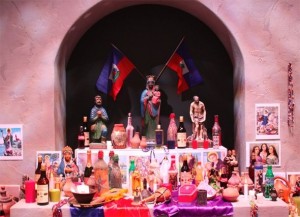
A typical Haitian Vodou altar. Compare this to the photo below of a Santeria altar and note the differences. Photo by Jeremy Burgins.
Louisiana Vodoun is markedly different from Haitian Vodou. It is more of an amalgamation of religious and magical practices found in the southern United States. This includes some of the Lwa found in Haitian Vodou, a strong presence of the Catholic Saints, and elements of southern folk magic like gris-gris, wanga and mojo bags. There is not a “regleman” in the same manner as Haitian Vodou and there is more of an emphasis on self-made Vodou Queens like the famous Marie Laveau. Louisiana Vodoun has a strong connection with Spiritualism and shares many magical techniques with Hoodoo (southern folk magic) – but should not be confused with Hoodoo. You will see the use of veves (ornate painted symbols) in Louisiana Vodoun, much as in Haitian Vodou. Louisiana Vodoun’s primary liturgical language is English with a bit of French Creole.
Santeria is a religion that evolved in Cuba. It is rooted in the African religious traditions of the Yoruba people (found in modern-day Nigeria). The followers of Santeria worship the orishas, the demi-gods of the Yoruba people. While there is a veneer of Spanish Catholicism for the outsider, that element quickly drops away once a person has undergone initiation. The primary involvement of Catholic elements in Santeria are found in Espiritismo, a separate religious practice that has been deeply interwoven into Santeria as of the mid-1900’s. Santeria is highly initiatory, secretive and operates under strict religious rules. Participation in the religion is very limited to those who are not initiated and the great majority of participants are initiates. Santeria does NOT use veves or ornate drawn symbols to call the orishas as are done in Vodou (bullseye-style paintings called osun are used in certain rituals but bear no resemblance to veves). Santeria’s primary liturgical language is Lukumí, a late 1800’s dialect of the Yoruban language interspersed with elements of Cuban Spanish.
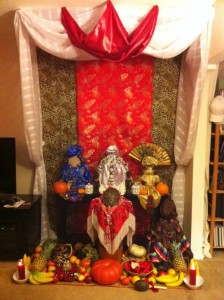
A Santeria altar (throne) to Chango. Each container has a different orisha’s mysteries within it, and is covered with decorative cloths, crowns and beaded mazos. Compare this with the Haitian Vodou altar above.
The religious proceedings and magical workings of these religious traditions may have similarities but they are certainly not the same thing. A person initiated in Santería will not have the religious rights or permission to participate in Vodou ceremonies like a Vodou initiate would. A person initiated in Vodou would not have permission and rights to operate in a Santeria ceremony. Each of these religions is different from one another, and each uses different languages, prayers, songs and rituals from the others. The only commonality between them is the use of animal sacrifice, and the employment of magical spell work as an integral part of their religious practice, but this is common with any religious practice from sub-saharan Africa.
What is Hoodoo? Is it Voodoo?
Often people mistake Hoodoo and Vodou. The differenced between them is simple. Vodou is a religion. Hoodoo is nothing more than Southern Folk Magic. Hoodoo uses the magical techniques of the Congo people of Africa without any of the religion. There is no presence of the nkisi, orishas, or lwa of Africa. In fact, most people who practice Hoodoo are Protestant Christians. You’ll see hoodoo workers also being called rootworkers or conjurers. They make magical charms called mojo bags, or jack balls. They’ll use magical powders, herbal cleansing baths, candles or lamps for spell work. All of this magical work is done while praying Psalms, praying to Jesus and God the Father, and reading from the Bible. While the vast majority of Hoodoo practitioners are Protestant Christians, there are some some Catholic practitioners who will petition Catholic saints. It’s important to note that they are petitioning the Saints themselves, not as a syncretized image for an African deity or spirit. So Hoodoo is not Voodoo.
Stereotypical and Racist Depictions of Santeria and other ATRs
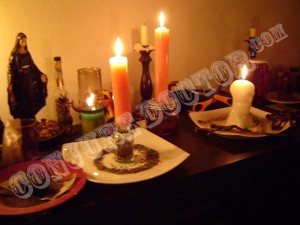
A typical hoodoo altar with several spells being worked for love, reconciliation and wisdom. A hoodoo practitioner will pray Psalms and Christian prayers when they cast spells.
For centuries, the African Traditional Religions (ATRs) have been the victim of racism and colonial stereotypes. This was an institutionalized way of dehumanizing the African people by labeling their religious practices as barbaric or demonic. This changing society’s perception of black people into animals or subhuman, in order to justify the slave trade and the brutal treatment of African people by invading muslim and christian missionaries.
Racist depictions of Santeria and other ATR practices include depicting the religions as satanic. It is common to portray these religions as nothing more than harmful spell casters focusing on zombifying people, using voodoo dolls to harm people, or engaging in cannibalism or pacts with the devil. (It is important to note that the use of dolls in magic comes from European witchcraft traditions.) Satan does not exist in Santeria. Satan is not worshipped in the ATRs. Cannibalism does not exist in Santeria, nor do we shrink heads or any such thing.
Remember when you see depictions like this in movies or television programs, they are racist depictions serving to scare those of European descent by portraying African religions as barbaric. Even the term “black magic” is a racist term. It originates from the labeling of African people as black and the characterization of their religions as purely evil. Therefore “black magic” meant black religious practice was evil. At the Santeria Church of the Orishas we detest the term “black magic” and prefer that people call things what they actually are. When referring to harmful magic call it harmful magic, not “black magic” out of respect for the black people of Africa and their peace-filled beautiful religious practices.
Santeria is Not Evil
Santeria is often mistakenly depicted as an evil religion that worships demons, engages in blood-thirsty rituals and seeks to do evil on others. This is further racist, colonial depiction of the beautiful and complex African religious tradition of Santeria. Santeria’s chief tenet is to always strive to stay in a place of iré (blessings) by following the advice of our egun, orishas and elders. There is a strong ethic of helping others and working cooperatively to lift people out of poverty and sickness toward blessings, health, prosperity and longevity. We pray for “iré omó, iré owó, iré arikú babawa” which means “blessings of children, blessings of prosperity and blessings of long life.” We strive to cultivate a good character, live peaceful lives and respect nature and others around us. There is the use of magic for one’s defense, but in many ways this is no different than praying to God for defense against your enemies or petitioning saints to stop those who seek to harm you. The same thing can be said for other ATRs like Vodou, Candomblé, Arará, etc.
The problem is lack of understanding and lack of knowledge. As long as people accept racist stereotypes and don’t educate themselves about the African Traditional Religions, they will continue to fear Santeria. The Santeria Church of the Orishas actively works toward demystifying Santeria Lucumí through educational efforts, so that people will know and understand what we actually believe and what we actually do.
Iré and Osogbo – Blessings and Misfortunes
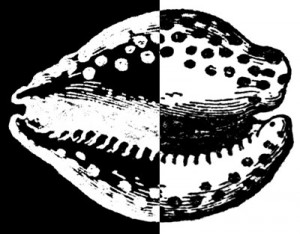
Humans eternally struggle to stay in iré (blessings) while constantly being assaulted by osogbo (misfortunes) – yet both must exist in the world.
In the religion of Santería Lucumi/Lukumí, we have a unique cosmology that is based on a binary understanding of energy and balance. There is hot and there is cold. There is light and dark. There is peace and there is chaos. These binary compliments to one another must exist because we live in a relative universe where things are defined relative to one another. In order to understand Santeria’s core ethical concepts we must first define this binary nature of the universe.
On the one hand we have iré. Iré means “blessings”. Iré is something beautiful, perfectly balanced, in alignment with your fate, cool, calm, organized, rational, white, light and peaceful. Iré is singular in nature – but we can experience iré in many manifestations: iré omó – blessings of children, iré owó – blessings of prosperity, iré alafia – blessings of peace, iré arikú – blessings of longevity. But ultimately there is only one iré and it is fleeting and difficult to maintain.
On the other hand we have osogbo. Osogbo means “misfortune”. Osogbo rules the Earth, and osogbo is everywhere. Osogbo is difficult, challenging, unbalanced, hot, chaotic, irrational, dark, black and often violent. Where iré is singular in nature, osogbo has many types. Each form of osogbo is seen as an entity, an actual being, that brings forth certain kinds of misfortune. Here are some of the osogbos:
- Ikú – death
- Arun – sickness
- Eyó – litigation or accusations
- Arayé – chaos and arguments
- Iña – war
- Ona – closed roads and obstacles
- Ofo – loss
- Ogo – witchcraft
- Akoba – bad
- Fitibó – unexpected sudden death
- Egba – Paralysis
- Oran – crimes
- Epe – a curse
- Ashelú – imprisonment
Each of these is depicted as an actual entity, where iré is not. Iré is a state of being. To be in iré means to be in perfect alignment and it is akin to being on the edge of a knife; it is easy to fall off on either side of it. Ultimately we all want to experience iré and its benefits, yet we are constantly assaulted by osogbo in the world.
Why Osogbo Rules the World
There is a patakí (legend) that explains why evil exists in the world, and why Osogbo rules it. This patakí can be found in the odu Okana Meji (1-1). In ancient times Iré and Osogbo were friends and both wanted to accomplish much in the world. Iré was older than Osogbo, and always had a bright and positive attitude. Osogbo was younger and was always brooding and unhappy. They both went to Olofi (God) and asked what they needed to do to be great in life. Olofi told both of them to make ebó (sacrifice) and then return to him the next day. Iré, being happy-go-lucky decided that he was tired and would have plenty of time the next morning to do his ebó so he went to bed with visions of his future greatness dancing in his mind.
Osogbo, however, was very diligent. He went home from Olofi’s house, gathered the items he needed and did ebó right away as Olofi had commanded. The next morning Iré over slept and when he awoke realized it was time for him to leave to be at Olofi’s house. Osogbo got up early, bathed and dressed in his finest clothes to appear before Olofi. Both met up outside Olofi’s house and entered together.
Olofi looked down at them and asked, “Well, did you do as I commanded?” Iré shamefully admitted he didn’t have the time to get it done and hadn’t completed his ebó. Osogbo responded with a confident, “Yes. As you commanded.” Olofi then decreed that since Iré was older, he would always be given one chance to speak, but if he missed his opportunity, Osogbo would rule thereafter. Osogbo was given reign over the earth because he completed his ebó and he multiplied to cover the world with his children.
Therefore, osogbo is plentiful, rules the earth and is found everywhere, while iré is singular in nature and only gets one chance to be present. He is undependable and unpredictable, thus osogbo tends to prevail in most situations.
If There is No Evil, There Can Be No Good
“If there is no evil, there can be no good.” thus speaks the odu Okana Meji (1-1) and it explains to use that without the evil experiences we go through in life, we will never be given an impetus to strive to better ourselves. Without the relative experiences of evil, mankind does not appreciate good. Without tense and trying moments, we will never know how relaxing and blessed those moments of iré really are. Without the trials and tribulations we face, we would never have ebó and we would never be able to petition Elegguá or the other orishas, to open our roads, change our fates and better our lives. This is the essence of Okana Meji (1-1) and of the nature of Iré and Osogbo.
The diloggún divination system works in such a manner that it determines whether the client who is being read is in a state of iré or osogbo. We ask only once to see if the person is in iré (blessings). If they are not, then they are in osogbo (misfortunes) and the type of misfortune is identified. The way diloggún works, the orisha who is speaking through his or her shells advises the client how to avoid or get themselves out of osogbo through behavioral modifications, taboos and ebó.
Ebó is unique in that it allows us to change our fates. It magically seals a pact with the orisha or egun offering to help us, so that they can lift osogbo off of us and return us to a state of iré. The necessary offering or ebó is marked in the divination and once the client completes his obligatory ebó he is brought back into a state of iré.
But always remember, iré is transitory. Iré is unpredictable. Osogbo rules this world. We will always face osogbo and will always need to do ebó to help get osogbo off our backs. We are in a perpetual struggle to attain and maintain iré and the orishas, divination and ebó are our keys to getting there.
Recent Articles
- Working with Ancestors in Espiritismo
- Honoring Ancestors in the Traditional Lucumí Way
- Dec. 4 – Feast Day of St. Barbara/Changó
- How to Learn Santería – Studying the Religion
- The Lessons of Obara Meji
- What’s the Difference Between Legba, Eleggua, Eshu and Exu?!
- Rev. Dr. E. at the Missionary Independent Hoodoo Workshops 2013
Article Categories
- Announcement (8)
- Ceremonies (4)
- Clarifying Misconceptions (11)
- Classes (3)
- Divination (2)
- History (1)
- How To (3)
- Missionary Independent Spiritual Church (1)
- Odu (1)
- Orishas (7)
- Religious Differences (3)
- Religious Practices (9)
- Religious Tenets (3)
- Responses (1)
- SAFE Alerts (6)
- Spirits and Ancestors (4)
- Terminology (9)
- Uncategorized (1)
Archives
Links

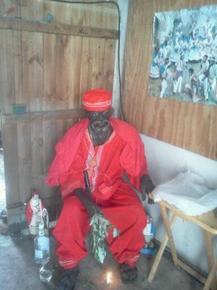
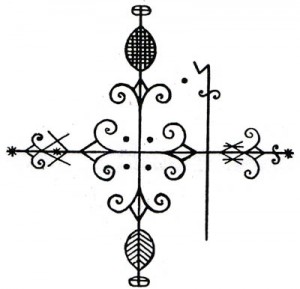
 Pagan Blog Project
Pagan Blog Project
Follow Us!